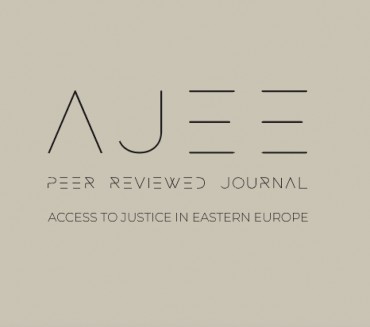Summary: 1. Introduction. – 2. Why the Rule of Law? – 3. Technologies in the Public Sector. – 3.1. Automated administrative orders. – 3.2. Risk-assessment tool COMPAS. – 3.3. Robot-judges. – 4. Why the Rule of Law Might be in Danger – 5. Conclusions.
Background: Technology promises the provision of public services to be more efficient, transparent, cheaper, and faster, but current issues associated with various technologies, such as, inter alia, discrimination, the ‘black-box’ problem, or cybersecurity issues raise concerns about potential legal risks. Accordingly, the question of whether democracies survive potential threats to legal norms arises. Various EU institutions express the position that we must promote technological applications but, at the same time, ensure adequate protection of human rights. However, sometimes this line is very thin – thus, it is necessary to examine how, and which technological applications should be applied in the public sector in order not to violate human rights requirements. The analysis of the proper assurance of the principle of the rule of law where certain technologies are implemented in the public sector will help to answer the questions of whether the chosen legal regulation in the implementation of these functions of the state is appropriate and whether the chosen method of technology integration complies with the principle of the rule of law.
Methods: The following methods were used in the article to research potential modern technology risks to the rule of law principle. The systematic method was useful when interpreting the mutual interaction of legal norms. With the help of this method, systemic connections with other legal norms and other sources of law were assessed. With the help of the teleological method of legal interpretation, the goals and objectives of the rule of law principle were determined. The comparative method was used to study the experience of foreign countries regarding various aspects of technology in the public sector.
Results and conclusions: The paper concludes that the supremacy of the rule of law must be ensured when applying any kind of technology in the public sector. The paper also concludes that different rule of law elements might be at risk in certain areas of the public sector where technologies are incorporated, such as automated administrative orders, the risk-assessment tool COMPAS, and robot-judges.

